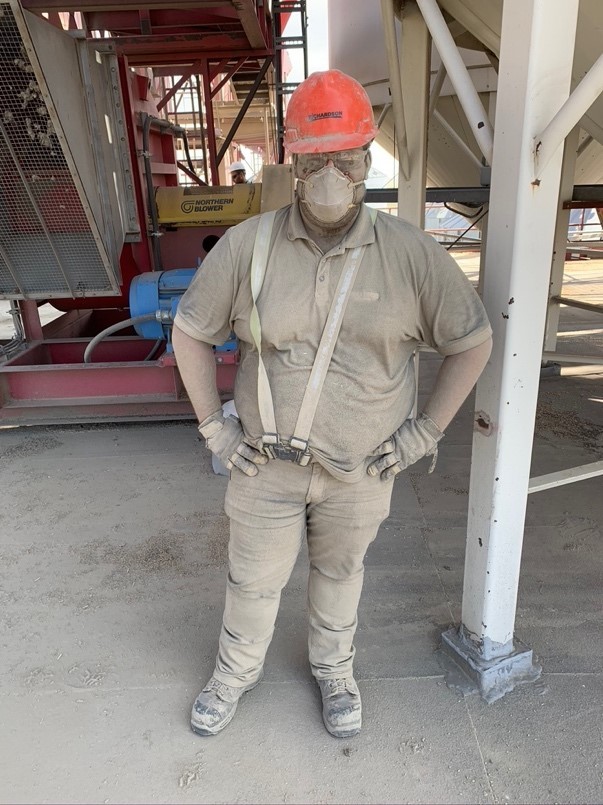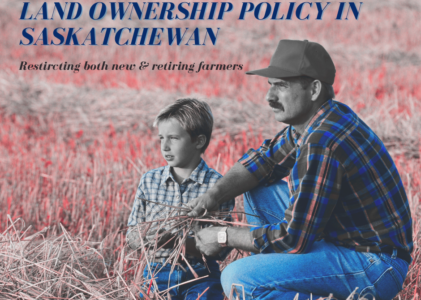Jordan Gadd
University of Saskatchewan Student Guest Blogger
Current Restrictions
Land ownership policy for agricultural land in Saskatchewan has become one of the most highly regulated compared to other provinces in Canada. Any person or entity who wishes to purchase farmland must be 100% Canadian, or Canadian-owned, this includes corporations, citizens, and permanent residents. Non-residents are eligible to purchase up to 10 acres without requiring an exemption from the government (Government of Saskatchewan, 2021). Pension plans and investment trusts are no longer allowed to purchase farmland. This change came in place after the Canadian Pension fund purchased 128 million dollars of farmland in 2013 (Nelson, 2015).
Restrictions in Manitoba are the closest in terms of regulations. The key difference is a non-resident restriction allows for up to 40 acres, compared to 10 in Saskatchewan. While the jurisdictions of Ontario and British Colombia have no restrictions regarding foreign land ownership (Feist, 2018). The policies present in Saskatchewan and across the provinces have a large effect on the current market value of the land. Economic theory surrounding perfect competition allows for the true market price to be established for this to happen there can be no barrier to exit or entry into the market for buyers or sellers. This deviation from true market price has large impacts on those both looking to enter or exit the market.
Implications for New Farmers
Currently, land ownership regulations are advantageous for new or expanding producers, as prices are kept below the true market price if all restrictions were to be lifted. High and further increasing land values act as a large barrier to entry for new and expanding operations. This has led to young producers taking different approaches to land control, which allows them access to land but prevents those young farmers from growing an equity stake in land value. New farmers have turned to alternative lease and rental agreements among other arrangements that can be made with current landowners, yet still find the purchase price of farmland too high and is a large barrier to expansion. Despite “lower than market” farmland prices the barrier to entry is still too high for new producers.
Implications to Exiting/Retiring Farmers
Retiring farmers may be looking to sell their land and maximize their return on investment as they enter their retirement. Doing so, these producers want land values to be as high as possible to ensure they receive top dollar. With current restrictions these farmers who are selling off assets do not receive the maximum price that they could and at times may not be compensated fairly for the years of hard work and equity built by their operations. This could be corrected for farmers if the restrictions of ownership were removed, accurate and fair market forces would increase land value prices allowing these farmers to receive proper financial compensation.
Recommendation
Currently, the system is leaving both parties in an inequitable solution as new farmers can’t find access to farmland despite current market conditions and retiring farmers are unable to maximize the return on investment that they have made over their working lifetime. This is a clear example of market failure and provides a good opportunity for the government to help correct this shortcoming. To combat this issue, I believe the right plan of action would be to remove the current restrictions and allow the market to fairly determine farmland values. This would allow the retiring farmers to receive adequate compensation for their assets. A new program or policy should be brought in that allows young producers and local Canadians to thrive in their economies. This could be done as a support program or subsidy for young and expanding farmers’ access to lower-cost loans that allow them better access to land and to remain competitive with the newfound foreign investors that would help return prices to a fair market value. The removal of current restrictions and the implementation of a new program would help to keep Canadian farmers in Canada and allow for the next generation to participate in rural economies while providing the past generation with a proper and fair return on their farmland equity.
Government of Saskatchewan. (n.d.). More Information on Farm Ownership. Retrieved from Government of Saskatchewan: https://www.saskatchewan.ca/government/government-structure/boards-commissions-and-agencies/farm-land-security-board-and-farm-ownership/farm-ownership/more-information-on-farm-ownership.
Feist, Benedict. “Foreign Ownership of Saskatchewan Farmland.” Norsasklaw, 17 Jan. 2018, http://norsasklaw.com/foreign-ownership-saskatchewan-farmland/.
Hein, Sarah. New Laws for Farmland Ownership. Government of Saskatchewan, https://www.saskatchewan.ca/government/news-and-media/2015/december/21/farmland-ownership-laws#:~:text=New%20Laws%20for%20Farmland%20Ownership%20Proclaimed%20Released%20on,will%20come%20into%20effect%20on%20January%204%2C%202016.
Nelson, Jacqueline. “Saskatchewan Stops Pension Funds from Buying Farmland as Prices Rise.” The Globe and Mail, 13 Apr. 2015, https://www.theglobeandmail.com/report-on-business/saskatchewan-stops-pension-funds-from-buying-farmland-amid-rising-prices/article23904754/.
Rice University. (n.d.). Perfect Competition and Why It Matters. In Principles of Economics. OpexStax., CC-BY license. Retrieved from https://opentextbc.ca/principlesofeconomics/chapter/8-1-perfect-competition-and-why-it-matters/.
Jordan Gadd

I am from Moose Jaw, Saskatchewan, and am currently in the fourth year of my bachelor’s degree in agribusiness. I grew up in the city and during my childhood would spend time at my family’s farm. Over time I developed an interest in prairie agriculture and some of the key issues facing not only our farm but the many prairie producers just like us. The photo provided is from one of my summer work terms with Richardson Pioneer (just cleaned the dust bin).

